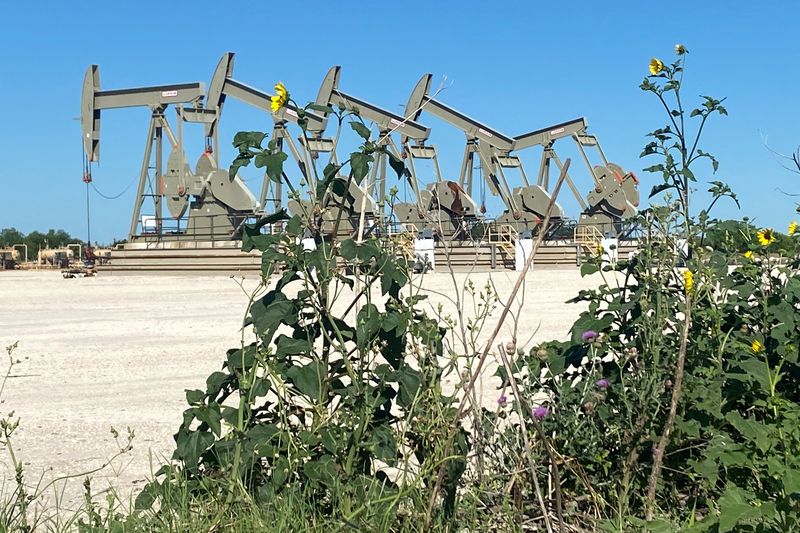Commodities
Oil prices tick up on tighter supply outlook

By Colleen Howe
BEIJING (Reuters) – Oil prices rose on Tuesday as the supply-demand balance looked set to tighten on operational disruptions, stronger demand and voluntary output cuts.
U.S. West Texas Intermediate crude futures rose 18 cents to $79.30 a barrel by 1224 GMT. futures gained 19 cents, reaching $83.55 a barrel.
The market is watching wildfires in remote western Canada that could disrupt the country’s oil supply, Tony Sycamore, market analyst with IG, said in a note.
As Canada’s wildfire season begins, firefighters on Monday were racing to contain one blaze in British Columbia and two in Alberta near the heart of the country’s oil sands industry. No operational disruptions had been reported.
But Alex Hodes, analyst at energy brokerage StoneX, said Canada’s 3.3 million barrel per day production capacity is “very likely to be affected”.
Oil prices settled up about 1% in the previous trading session on improving demand from the U.S. and China.
U.S. motorist group AAA has forecast Labour Day road trips for the May 25-27 long weekend rising to the highest level since 2000, while Chinese data over the weekend showed consumer prices rising for a third straight month.
The market also continued to react to bullish comments from Iraq’s oil minister, Hayyan Abdul Ghani, over the weekend, according to a note from ANZ analysts. Ghani said on Sunday that Iraq would honour voluntary output cuts made by OPEC+, which includes the Organization of the Petroleum Exporting Countries, Russia and other non-OPEC producers, at its upcoming meeting on June 1.
remove ads
.
That reversed course from his Saturday comments that Iraq had made enough voluntary reductions and would not agree to any new output cuts.
Commodities
Oil prices rise; U.S. crude inventories plunge, Russia-Ukraine truce eyed
Commodities
India’s Reliance to stop buying Venezuelan oil over US tariffs, sources say
Commodities
Oil prices climb on Venezuela supply worries

 Forex3 years ago
Forex3 years agoForex Today: the dollar is gaining strength amid gloomy sentiment at the start of the Fed’s week

 Forex3 years ago
Forex3 years agoUnbiased review of Pocket Option broker

 Forex3 years ago
Forex3 years agoDollar to pound sterling exchange rate today: Pound plummeted to its lowest since 1985

 Forex3 years ago
Forex3 years agoHow is the Australian dollar doing today?

 Cryptocurrency3 years ago
Cryptocurrency3 years agoWhat happened in the crypto market – current events today

 World3 years ago
World3 years agoWhy are modern video games an art form?

 Commodities3 years ago
Commodities3 years agoCopper continues to fall in price on expectations of lower demand in China

 Economy3 years ago
Economy3 years agoCrude oil tankers double in price due to EU anti-Russian sanctions























